DIYPR | The Basics: Social Media + Content Development
Just a basic plan in case you’re already planning an event or initiative and you want something to help put structure to your content development + social media. Part of my DIYPR Series.
Just a basic plan in case you’re already planning an event or initiative and you want something to help put structure to your content development + social media. Part of my DIYPR Series.
So, what is it that you actually, like, do?
– The Question
I’ve been playing around with a few different ways to describe what it is that I actually do. I’ve called myself a “digital marketer”, a “content developer”, “content marketer”, “digital content marketer”.
I try not to take this naming stuff too seriously and just focus on the work. But it’s become a bit of a game – a challenge I’ve accepted to try and find the perfect way to describe what it is that I do.

The long story goes something like this: I love ideas, worked in the PR industry for a few years, and have some front-end web development skills, so what I do is a combination of all of those things.
Then one day I got an idea. It started in my brain like: “Wouldn’t it be great if I could create something that could perfectly describe what I’m trying to get at? Maybe instead of trying to come up with the perfect phrase, I could just draw a picture.”
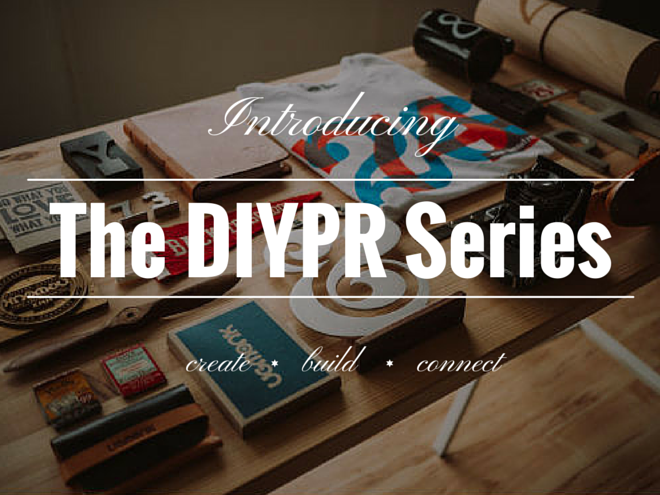
The idea behind it is that this “stuff” — public relations, creating content, social media, marketing — can be easy. Especially for entrepreneurs, business owners, freelance consultants, independent-types who pretty much do everything (if not almost everything) on their own.
The key takeaway in this series of posts is:
PR opportunities are everywhere. Use those opportunities to build your social media profile and develop content that you can use and reuse.
If you’ve got a small business or you’re an independent consultant, and you’re going to host an event, do a talk or some other thing where you’re the centre of attention, make it a habit to get and track content from that event.
Keep in mind when creating content that the best stuff is content you can repurpose. If you create a blog post, presentation or video, create another piece for repurposing that you’ll keep. This way you can share something immediately and you also have something you can use in the future. Maybe use a calendar to pick a date for repurposed content, so that you don’t post something when it’s past the “expiration date”.
The big content guys do stuff like this all the time. They’ll have a webinar (the PR part), live tweet during the webinar (social media) and then have some type of content on their sites to connect with the webinar, such as a blog, or they’ll just post the webinar itself on YouTube or their website. Then sometimes that content will be reused in some way, maybe via a presentation or short infographic.
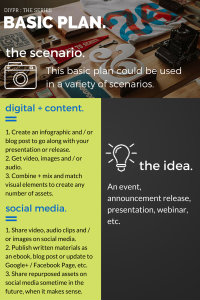
So over the next year, I plan to publish one or two DIYPR Series posts a month. I picked twenty business or organization types and described a PR tactic that could be used for that business in a particular scenario. Then I made up some ideas to show how each initiative could translate to social media and creating content.
Here’s what each post will look like:
There is none. The graphics, ideas and everything else associated are under a strict Do-Whatever-The-Hell-You-Want [Forever] License. Feel free to take and tweak as much as you like.
Just like with anything else though, the ideas shouldn’t be used in isolation. Feel free to use them as part of a plan you have already, or as a way to kick/jump-start your own efforts.
So with that out of the way, next week in the DIYPR Series: The Basics.
A couple weeks ago, I attended a webinar for the Content Management Institute on website rebranding and redesign. It was an apt topic for me because I spent pretty much the whole Christmas break this past year on rebranding and redesigning my own site.
It’s strategy that wins wars… You have to have your website strategy clearly in mind before kicking off any redesign or rebrand project. Know what you want your new website to do.
– Lou Jordano (CMO, Ektron)
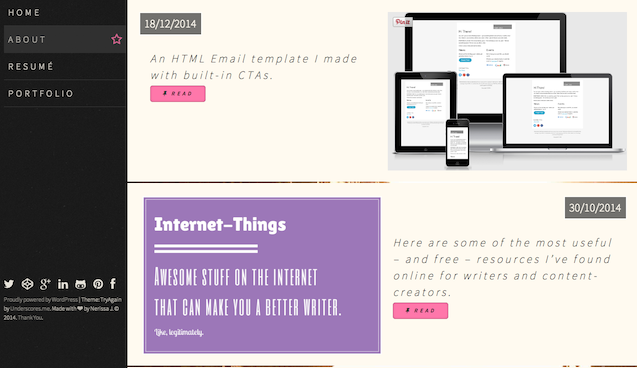
Here’s some points on how I knew it my site needed to be redone. Hopefully something here can help you decide if you need to overhaul your own website, but if not, you’ll find four more reasons to rebrand your site below.
While I was building the site, a part of me was getting mentally prepared to explain to people what I did. I knew that visiting the site wouldn’t explain everything right off the bat (hence the site I have now :)). I wanted my site to be all about my blog, so having it front and centre seemed to make sense. But my site wasn’t built to just be a blog, it’s basically the centre of everything I do, so it needed to be more than just a place I could list posts.
Being the core of my business, you would think the ‘About’ section (or information) would be essential. But on my old site it was literally a bunch of images that didn’t really say anything. Talk about a missed opportunity.
This is perhaps the biggest reason I know the redesign worked. After redo, the bounce rate dropped significantly. Granted, my site is more or less one page, but compared to other similar sites, the bounce rate is right where it should be.
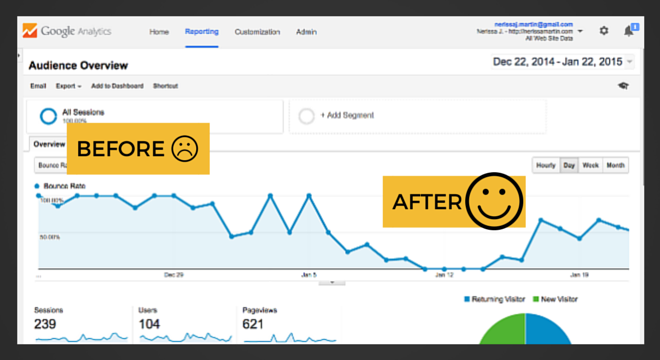
I wanted to include everything on the site – I’d gone to school a bunch of times, wrote a book and sang on the side. I wanted the site to have all that stuff in it but after a meeting with Heather, CEO @ HackerYou, I realized that in throwing everything on my site I had made a messaging-mess.
Rebranding gave me the opportunity to think of more creative ways to say what I wanted to. For example, using the typewriter image as the background for the first section. I also thought of blog post ideas and other ways I could use content to talk about music and writing.
This point speaks more to paying attention to your intuition. While I was building the site, I knew I would have to redo it. By the time this dawned on me I was halfway through, so throwing everything away didn’t even cross my mind.
I figured I would stay on track and that the finished product would be a kind of ‘holding page’ to just have ‘something up there’ until I got a real site. Except it wasn’t. I was spending hours on it, much more time than should have been if its purpose was really only temporary.
Sure I learned some new things and put my fresh HackerYou skills to use, but I was too far deep in building the site to get any perspective. This is where I learned the lesson of having a vision for your site.
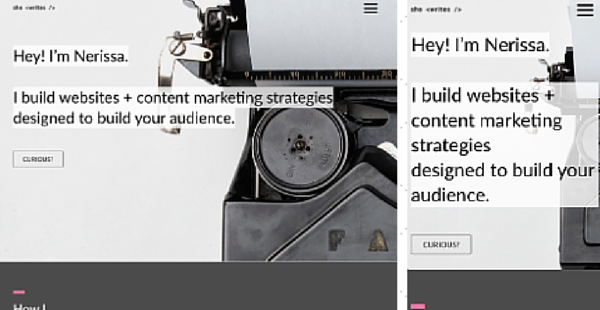
I’m going to resist the urge to find every outdated / ugly site online and just post links with a full description of what they’re doing wrong. We’ve all seen a site that could use a refresh; doing that would be what the kids call “a read”. So here are four more reasons you may need to rebrand or redesign your site:
A lot has happened in web development over the last few years. If you’re website is more than three years old and it hasn’t been updated, it’s time to look at how those developments can get you paid.
Is there stuff on your site that is no longer relevant to you or your business? Do customers continually ask you for products or expect certain things because they ‘saw it online’? The solution is simple: update your site!
Use the opportunity to educate your current / potential customers and clients about your business. You’ll spend less time answering questions and more time making money.
If you’re getting unsolicited feedback on your site, consider it a gift. Most of the time visitors to your site will keep their [sometimes very valuable] opinions to themselves. But they’ve got insights, those silent witnesses. They have reactions to the way your site looks and how it works, and this information is probably exactly what you need to improve UI / UX.
Why not ask someone their opinion of your site, or send out a survey to a select group of customers / clients? Think of it as an opportunity to build a relationship and be prepared to offer them something in return.

You’re lucky if you’re getting ready to make some changes to your business. Your website hasn’t been re-touched yet so in some ways you and your business are “starting fresh”.
While you’re considering rebranding your business, think about ways you could potentially update your website. You might want to reach out to a content marketing or development expert to ask about potential opportunities to update your site in a way that will be consistent with your new brand.
Websites are never finished only abandoned. You and your developer could spend the rest of your lives redesigning, rebranding, retooling, rewriting.
Having some guidelines can help you and your team decide how updates should be made, if they should be made. On a basic level, the changes to your site should follow the flow of your business. Rebrand your site if and when your business changes or people important to your business are telling you a redo is needed.
One of the things that was on my wish list as a consultant was a way to show potential clients a clean, easy-to-read proposal. Something that was consistent with my brand, could be created and shared easily, and that I could update or customize as much as I wanted to.
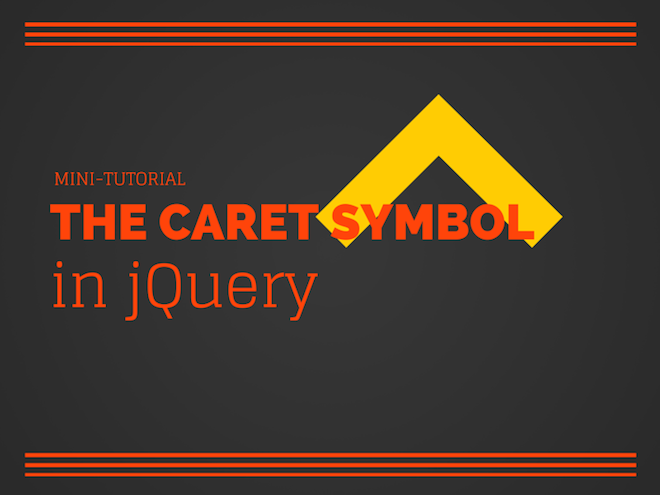
The most important thing for me was having all the information for each proposal in one post, but I wanted to break it up into sections that could be navigated through like a typical website.
Each menu item in the navigation bar would link to a section of the proposal, but I didn’t want the webpage to reload on every click.
Enter the ^ selector and jQuery. [Thanks to slipsum for some ipsum, and some swears.]
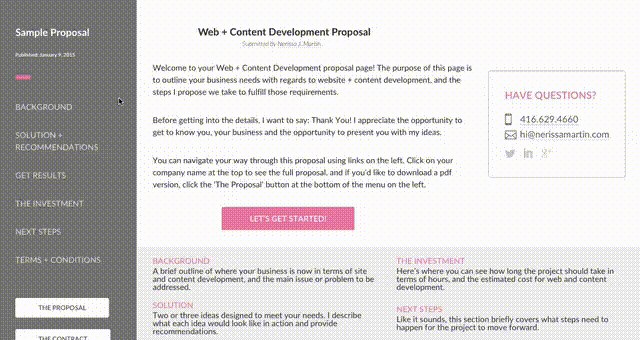
After planning out each section, the headings I needed, subsections and the overall flow I was able to create the custom post type. Then in the proposal template file, I pulled in each section under a specific ID, using “div_” at the beginning of each ID name.
The caret (^) selector in jQuery allowed me to select all divs with an id that started with “div_”. See here for more info.
To create the behaviour I wanted, I used .hide() on all the divs I didn’t want to show, while making sure to single out the section(s) I did want displayed with .show().
To start with, I created an intro ‘page’ that would be attached to each proposal. This would be the first thing users see when they land on the page, so all of the proposal sections needed to be under .hide() when the page loads.
Then once the user clicks on a menu item, all the “div_” sections are hidden, except for the one corresponding to whichever item was selected [I used .attr() to remove menu item links].
The title of each post would be the client’s name, so I used a .click() method on that to .show() all the sections (except for the intro) so the proposal could be viewed in full.
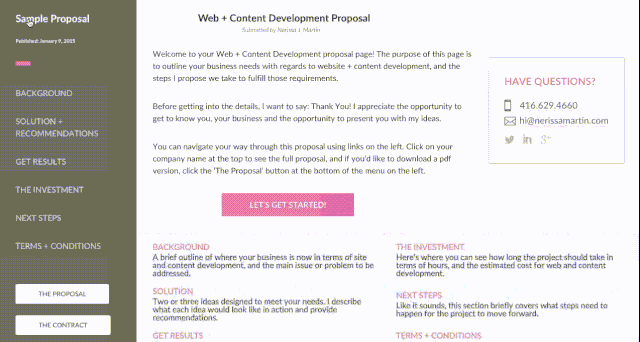
Last week I published a post on creating a vision for your website. This can help you decide the best direction to go in before development, and (spoiler alert!) can help you figure out what kinds of content you want to develop. After launch it can be tempting to just leave your site and hope for visits.
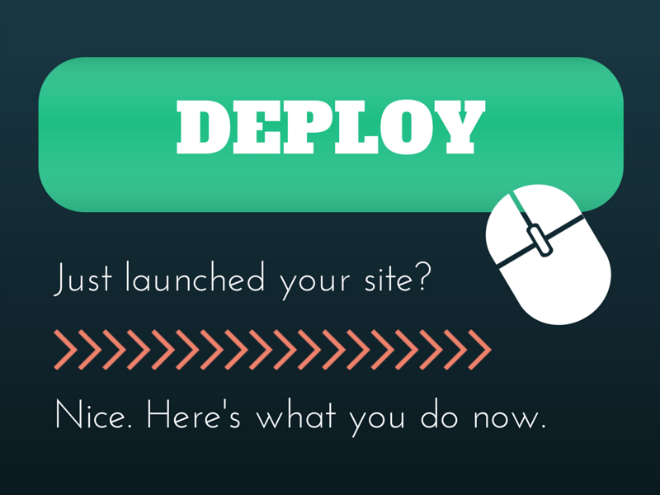
Getting traffic isn’t just about getting traffic. Ideally you want to share useful content that’s targeted for your audience. If you’re doing that, the traffic you get will be people who are interested in what you have to offer.
So with that, here are six things you can do to make sure your audience finds your site.
It takes five minutes.
Ideally you want visitors to go from being strangers to clients. Do you have content that helps them through this process? Stuff that requires them to stay a while? Here are some ideas on content you can develop that will help your visitors:
Following point #2, once you’ve created a vision for your site, you should have some idea of the types of content you’ll be publishing (ie. videos, blog posts, images, ebooks, news releases, etc.). You don’t even have to make a whole editorial calendar, just schedule posts and updates into the calendar you already use.
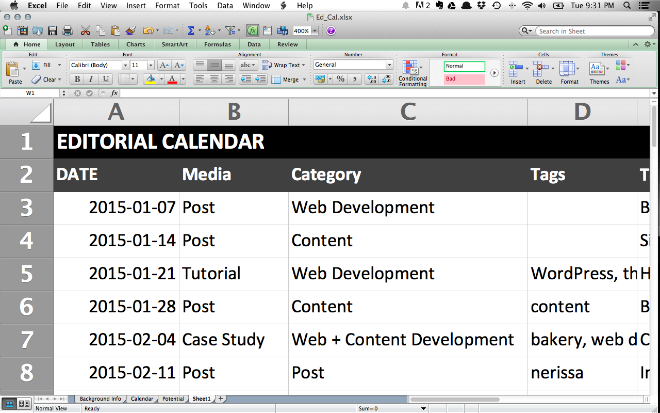
Get the right traffic to your site by registering on major search engines, create content that helps your potential clients and customers get acquainted with you and what you’re selling, and telling everyone you know. Keep your site consistent with your vision by checking analytics.